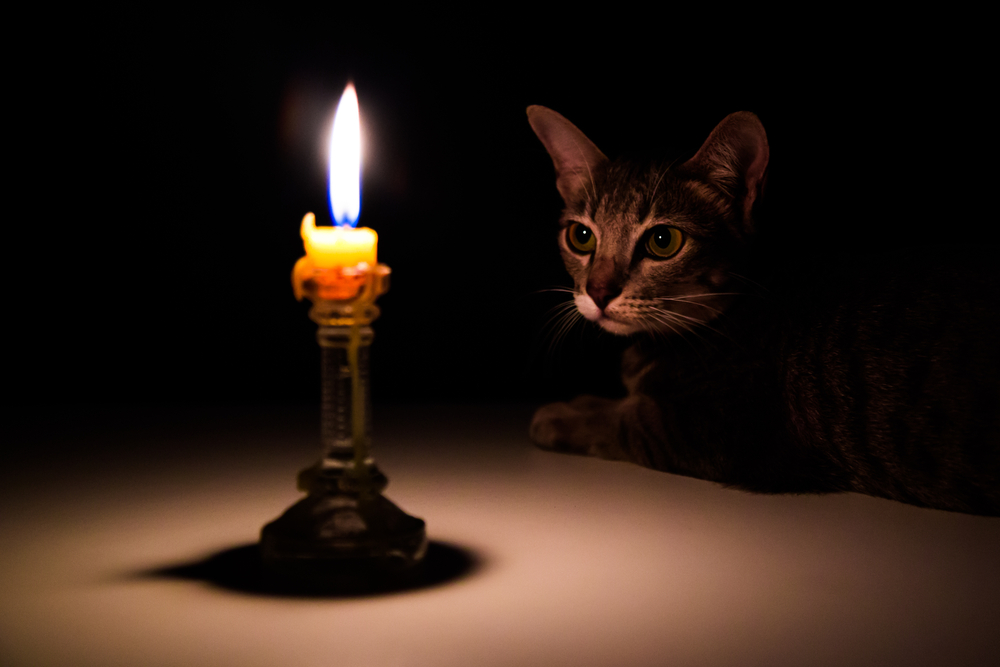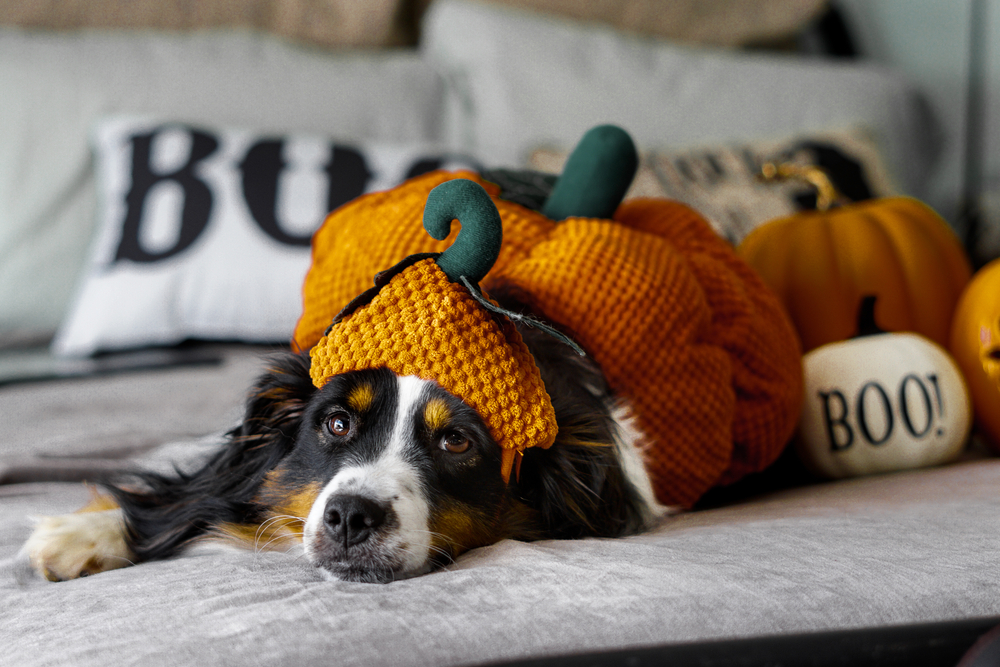Halloween is around the corner, and when the ghosts, goblins, and ghouls come out, your pet could be in danger. Our Caldwell Animal Hospital team explains factors you should consider to keep your pet safe this Halloween season.
#1: Missing pets are a nightmare
Halloween festivities can be hectic. People in strange costumes, spooky decorations, and loud crowds can be so frightening for your pet that they run away. Take the following steps to prevent your pet from getting lost:
- Keep your pet inside — Halloween brings out people’s wild side, and you don’t want your pet to become a prankster’s target. Ensure your pet stays inside on Halloween night to protect them from rabble rousers.
- Create a safe haven — Designate an interior room in your home as your pet’s safe haven where they can escape if they are overwhelmed or frightened. Provide comfortable bedding, your pet’s favorite toys, and some of your recently worn clothing to help comfort your pet. If you will be away for the evening, leave the television or music playing to help muffle outdoor noises, and give your pet a food puzzle toy as a distraction.
- Microchip your pet — Microchipping your pet greatly improves their chances of being returned to you if they go missing. This procedure is simple and relatively painless and can be easily performed at your pet’s next wellness visit. Once the chip is implanted, you only have to keep your contact information in the microchip registry current, so you can be located if your pet is found.
- Ensure your pet wears identification — Your pet should also always wear a collar and identification tags with your current contact information, so they can be returned if they go exploring on Halloween.
#2: Poisoned pets are a horror show
Several treats commonly found in your child’s Halloween bag and served at spooky gatherings are toxic to pets. Substances that can be a problem include:
- Chocolate — Chocolate ingestion is the most common toxicity cause at Halloween. The delectable treat contains theobromine and caffeine, which cause central nervous system stimulation in pets. Dark chocolate is more dangerous, but any chocolate consumption is contraindicated for pets. Signs include vomiting, diarrhea, restlessness, and seizures.
- Xylitol — Xylitol is a common ingredient in sugar free candies and gum that causes a dose dependent insulin release, which can lead to a severe drop in blood sugar 10 to 60 minutes after ingestion. Higher doses can lead to liver failure. Signs include vomiting, weakness, incoordination, weakness, seizures, and coma.
- Raisins — Grapes and raisins contain an unidentified toxin that causes kidney failure in pets. Signs include lethargy, decreased appetite, and vomiting.
- Onions — If you serve hors d’oeuvres that contain onions, garlics, or chives, ensure your pet doesn’t partake. Members of the Allium family, these vegetables contain a toxin known as N-propyl disulfide that causes oxidative damage to the pet’s red blood cells, resulting in anemia. Signs include weakness, vomiting, and red tinged urine.
- Alcoholic beverages — Many Halloween revelers enjoy an alcoholic beverage to celebrate the creepy occasion, but pets are extremely sensitive to alcohol, and you must ensure your pet doesn’t sample any from an unattended cup. Signs include lethargy, incoordination, vomiting, and collapse.
#3: Pet costumes can be a tormenting experience
Dressing your pet in a cute Halloween costume can be fun—and a great photo opportunity—but these outfits aren’t always safe for pets. Tips to keep your pet safe when dressing them for Halloween include:
- Acclimate your pet — Pets need time to adjust to wearing a costume. Initially, let them investigate the costume, and then dress them in the costume for a short period, gradually increasing the time they spend in the outfit. If they act stressed, your pet may not be a good candidate for a costume.
- Ensure the costume fits — Ensure the costume isn’t too big or too small for your pet, and that the fabric doesn’t rub or impinge on your pet’s skin. In addition, ensure the costume doesn’t inhibit your pet’s breathing or vision.
- Avoid dangling parts — Dangling pieces can be chewed and swallowed, potentially causing a gastrointestinal obstruction.
#4: Halloween decorations can be a terrifying curse for your pet

Halloween decorations get more elaborate every year, creating a more creepy and frightening mood, but keep your pet in mind when you decorate. Potential dangers include:
- Animated figures — Animated skeletons and witches are great fun for scaring neighborhood kids, but they can also scare your pet, potentially causing stress or aggression.
- Candles — Lit candles are popular for creating a spooky Halloween atmosphere, but they can be fire hazards if knocked over by a tail wag or curious paw.
- Holiday lights — Decorative holiday lights can brighten your outdoor space, but ensure your pet can’t chew on the lights or the power cords and have a shocking experience.
Halloween is a fun time of year, but you need to take steps to ensure a veterinary emergency visit doesn’t ruin your holiday plans. If you would like to microchip your pet before the ghosts and ghouls come out to play, contact our Caldwell Animal Hospital team and let us help ensure your pet has a safe Halloween experience.







Leave A Comment